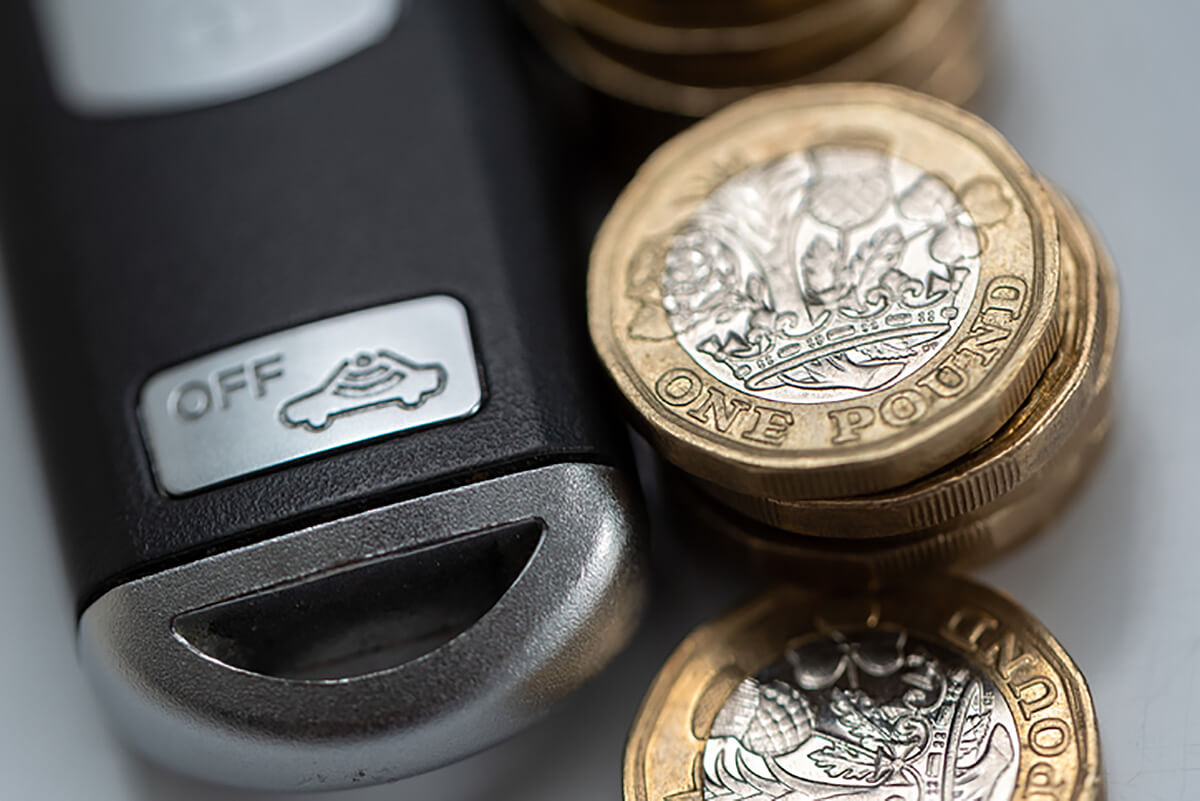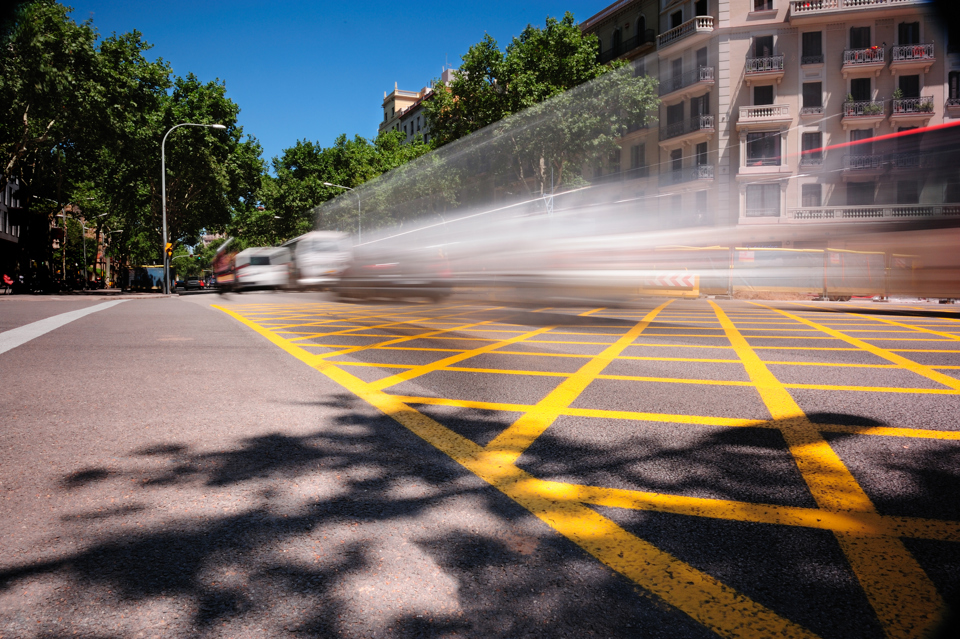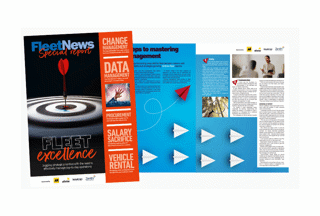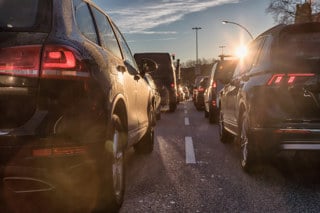Hundreds of thousands of drivers have been hit with fines from poorly designed and oversized yellow box junctions, new research suggests.
A study, commissioned by the RAC, found that almost every yellow box junction it analysed – 98 out of 100 yellow boxes in London and Cardiff – is bigger than it needs to be to prevent traffic congestion.
It asked Sam Wright, a chartered engineer who was responsible for the design and approval of yellow boxes for Transport for London (TfL), to examine100 junctions in Cardiff and London which were collectively responsible for 374,276 fines in 2019.
Wright, who runs the Yellow Box Guru website, found that 98 were larger than necessary, with the average box being 50% bigger than it needed to be to serve the primary purpose of having a yellow box in the first place – to prevent vehicles blocking the path of other crossing traffic.
More than half (53) were also not under traffic light control and could therefore easily be converted to ‘keep clear’ markings to serve the same purpose, without the risk of a driver being sent a Penalty Charge Notice (PCN) and ordered to pay a fine.
“Making sure yellow boxes are the correct size is extremely important when you consider that even a car bumper overhanging part of a box can result in a driver being fined to the tune of up to £160 depending on where they are in the country,” said Wright.
“Yet in so many cases, drivers can’t avoid stopping in them – a good example being where a yellow box is so big that a driver can’t see where it ends. Throw in some bad weather that reduces visibility, and the potential for unnecessary fines increases still further.”
He continued: “The Government has stated that ‘poorly designed schemes can undermine enforcement overall and give rise to public perception of revenue raising’.
“But it needs to go further and be crystal clear with local authorities about what is acceptable and what isn’t when it comes to the design of yellow box junctions. The current official design guidance is woefully inadequate and needs to be updated.”
While yellow boxes can play an important role in keeping vehicles moving at busy junctions, the RAC says that those boxes – or parts of boxes – that do not prevent vehicles blocking the path of other crossing traffic serve no purpose, meaning there can be no justification for them being there and therefore for councils fining drivers every time they partially stop in them.
However, this principle is only very loosely referred to in the current guidance, leading to inconsistent compliance among councils, according to the RAC.
Poorly designed, oversized boxes create all sorts of other problems for drivers as well.
Under Highway Code Rule 174, drivers must only enter boxes if they can see their exit is clear. If a yellow box is so big it is impossible to see where it ends – or if the road markings have worn out – judging whether to drive into or not becomes extremely difficult.
While there have been occasions where drivers have successfully challenged fines from councils where boxes are too big, unfortunately these decisions do not lead to lasting change in the way the law is applied.
There are a number of reasons why yellow boxes might be too big, the most likely one being that they were painted prior to 2016 when the regulations were last updated and demanded that boxes had to extend to the kerbs on either side of the junction.
Yet Government guidance from 2022, aimed primarily at new councils enforcing ‘moving traffic offences’ including yellow boxes, states: ‘Enforcement action should not commence at any location where contraventions could be avoided by reasonable improvements to the highway or to traffic signs, and not until such improvements are made and appropriate monitoring has been carried out’.
Arguably, the guidance is just as a relevant to councils in London and Cardiff that are already enforcing yellow boxes, although it does not formally apply to them, says the RAC.
The Government announced three years ago that it would let councils outside London, rather than the police, enforce against moving traffic offences.
RAC spokesperson Rod Dennis said: “With more and more councils starting to enforce yellow box junctions, it is absolutely vital that they are designed first and foremost with aiding traffic flow and that they don’t exist simply to raise revenue from drivers.
“Unfortunately, any box that is bigger than needed – whether that’s due to an oversight on the council’s part or because it was painted on the road many years ago and hasn’t been reviewed – risks drivers being fined unnecessarily when their actions haven’t contributed to congestion.”
He added: “We fear that unnecessary penalties are going to mushroom in the coming years as more councils start enforcing yellow boxes, unless a responsible approach to the design and enforcement of them is taken.”
Wright and the RAC are calling on the Government to urgently refresh its advice to councils, to spell out precisely their purpose in terms of preventing the cross movement of other traffic, and to make it clear where and how they should be used.
As well as looking at the overall size of the yellow boxes, the RAC-commissioned study found a fifth of those analysed (22) are also potentially not compliant with the Traffic Signs Regulations 2016.
What’s the penalty for stopping in a yellow box junction?

In London, many box junctions have cameras in place. On TfL red routes, the penalty charge notice is £160, reduced to £80 if paid within 14 days. In London Boroughs, the penalty is £130, reduced to £65 if paid within 14 days.
The penalty in Cardiff and in other English authorities that have been granted the power to enforce, is £70. If payment is made within 21 days, then this is reduced to £35.
For analysis of the top 100 yellow box junctions enforced in London and Cardiff, click here.























Login to comment
Comments
No comments have been made yet.